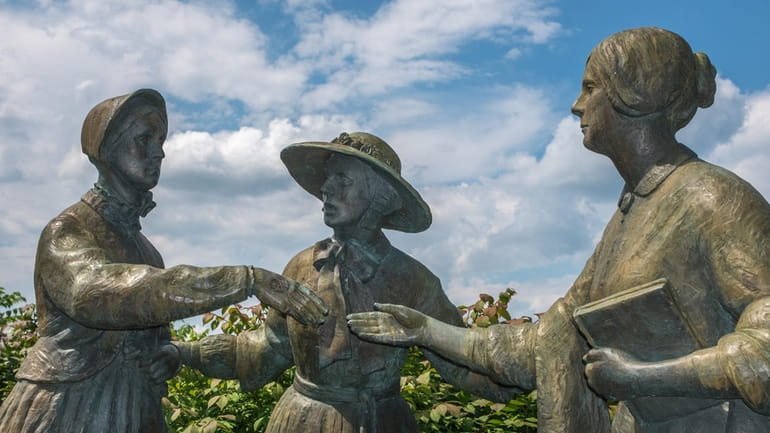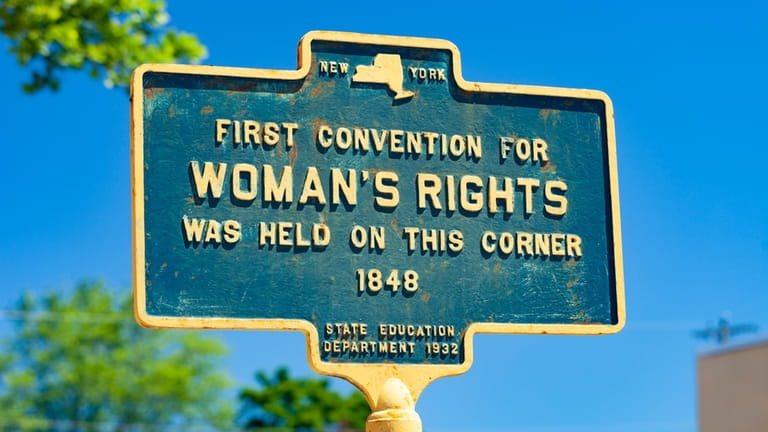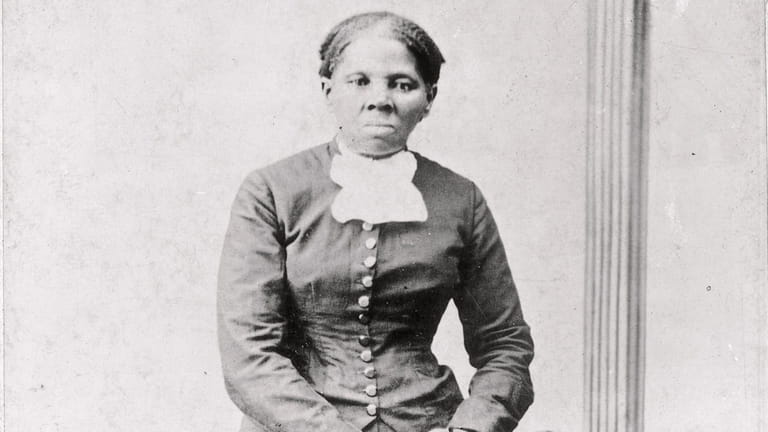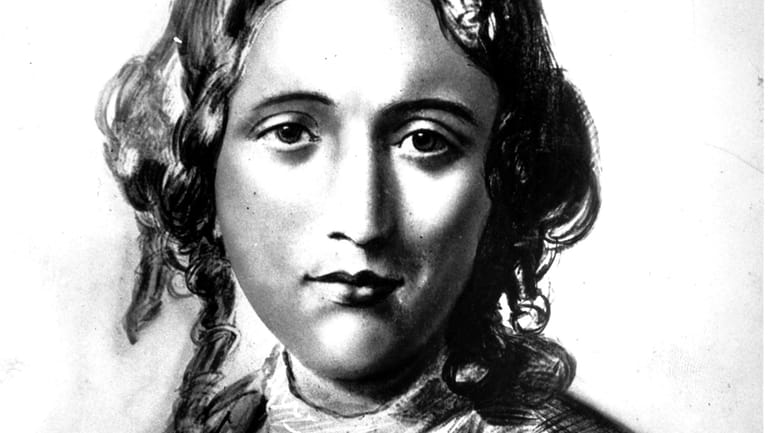Historic sites in the Northeast to visit during Women's History Month

A statue at Seneca Falls depicting the first meeting of feminist activists Susan B. Anthony, Amelia Bloomer and Elizabeth Cady Stanton after they attended an anti-slavery lecture by William Lloyd Garrison in May 1851. The statue is by internationally renowned sculptor and artist A.E. Ted Aub. Credit: Epics
Until 1920, and the passage of the 19th Amendment, women could not vote in the United States. In the decades leading up to that date, suffragists withstood persecution, ostracization and even violence. Modern women have benefited from the gumption of those who came before them, so why not celebrate those hard-won fights with a visit to homes and venues of some of the most prominent women in American history?
Here are historic homes, museums and tours in the Northeast that celebrate and honor women and their accomplishments throughout history.
Women's Rights National Historical Park
136 Fall St., Seneca Falls

An historical marker where the first Women's Rights Convention was held in Seneca Falls, New York in 1848. Credit: Getty Images/traveler1116
Although Harriet Tubman and Frederick Douglass moved to this land of temperance and abolition after escaping slavery in Maryland, the story of the Women’s Rights Movement in Seneca Falls focuses for the most part on suffragist Elizabeth Cady Stanton, who arranged the first Women’s Rights Conference right in Seneca Falls in 1848. Start at the Women’s Rights National Historic Park (free), which interprets the growth of the suffragist movement in the United States, the relationship between Stanton and Susan B. Anthony and the sisterhood that formed among them and others involved in the cause. If the Stanton home is open, be sure to take a tour that delves into the personal side of Stanton’s quiet yin to Susan B. Anthony’s courageous yang. Next, visit the National Women’s Hall of Fame (free).
“The National Women's Hall of Fame plays a pivotal role in preserving and celebrating the significant contributions of women throughout American history. Established in 1969, the Hall of Fame serves as a beacon of recognition for women who have excelled in various fields, including politics, science, arts and social activism,” says Colin McVey, marketing coordinator at the site.
More info 315 568-0024, nps.gov
Overnight stay Spend the night at this small, boutique Gould Hotel, with nightly rates starting at $150, located next to the Women's Rights National Historical Park.
Home of Susan B. Anthony
17 Madison St., Rochester
Anthony, born in Adams, Massachusetts, in 1820, came to Rochester with her family of Quaker abolitionists at a time when upstate New York was drawing a hotbed of activists. Anthony became one of the leaders of the Women’s Rights Movement in America. A tour of the National Susan B. Anthony House and Museum ($15) begins next door in her sister Hannah’s home. After a short orientation, you’ll step on the same bluestone sidewalk, installed in the mid-1800s, that the Anthonys did.
Built in 1859, Anthony’s home is not grand. But, of course, it holds plenty of vivid tales: many of which you’ll hear on an engaging tour. The third floor — dubbed the War Room — is the most thrilling. It was here that some of the most influential women of the day gathered to plan next moves and write the words that would inspire fellow suffragists.
“Susan B. Anthony's National Historic Landmark home was not only where she lived during her most politically active years, but also where she was arrested for voting as a woman in 1872. Visitors come from near and far to stand in the room where it happened,” says Deborah Hughes, president and CEO of the National Susan B. Anthony Museum and House. Visit Anthony’s Rochester grave at Mount Hope Cemetery nearby. Every four years, on Election Day, crowds of women make a pilgrimage to place “I Voted” stickers on her tombstone.
More info 585-235-6124, susanb.org
Eleanor Roosevelt National Historic Site
Route 9G, Hyde Park
After her husband’s death, Eleanor Roosevelt continued to work on behalf of civil and humanitarian organizations for nearly two decades. At the FDR Library and Museum, her efforts are depicted in an exhibit that includes the suitcase she took to Tennessee on a civil rights trip. At an untenable point in their marriage, Roosevelt built her own home on the site of Val-Kill Industries. The collective had been established in 1926 by craftsmen a few miles from the Roosevelt home. When FDR died in 1945, Eleanor moved in permanently and lived at Val-Kill until her death in 1962. Kings, queens and diplomats would arrive at the modest screen door asking, “Are we in the right place?” Visit the FDR Library and Museum — and then plan a tour of Val-Kill cottage ($10).
More info 800-337-8474, nps.gov
Harriet Tubman Home and Gravesite
180 South St., Auburn, New York

This 1860-75 photo made available by the Library of Congress shows Harriet Tubman, who served as a spy, nurse, cook and hero, passing along vital information about Confederate Troop movements to her superior Union officers. Credit: AP/Harvey B. Lindsley
There’s something magical — some would say “touched” — about Tubman. Despite standing just 5 feet tall, she was called “The Moses of her people” and was somehow able to escort friends and family hundreds of miles on dangerous missions from bondage to freedom. During the Civil War, Tubman served as a spy, nurse, cook and hero, passing along vital information about Confederate Troop movements to her superior Union officers. Later in life, her admirers ranged from Douglass to Anthony — friends and fellows on the lecture circuit in the cause for women’s rights.
Tubman moved to upstate Auburn in her later years and remained dedicated to serving others. She purchased a home there, established housing for the indigent elderly on her property, and was buried at Fort Hill Cemetery in Auburn with full military honors. Take a tour of her property, with limited access to some buildings (appointment required: $7).
More info 315-252-2081, harriettubmanhome.com
Harriet Beecher Stowe Home and Center
77 Forest St., Hartford, Connecticut

Harriet Beecher Stowe is shown in this undated drawing. Her novel "Uncle Tom's Cabin" is one of the most popular stories of all time. Credit: ASSOCIATED PRESS
Visit the home of Harriet Beecher Stowe, author of “Uncle Tom’s Cabin,” who was according to Abraham Lincoln, “the little lady who started this big war.” Beecher Stowe and Mark Twain were friends and next-door neighbors in Hartford from 1874-1891. Stowe was staunchly anti-slavery. In 1851, she began to draft a series of 40 stories, inspired by the slave diaries of Josiah Henson, for the Washington, D.C.-based abolitionist newspaper The National Era. The series was so wildly popular, that, when condensed as a book, “Uncle Tom’s Cabin” became a 19th Century bestseller, second only to the Bible.
More info 860-522-9258, harrietbeecherstowecenter.org
